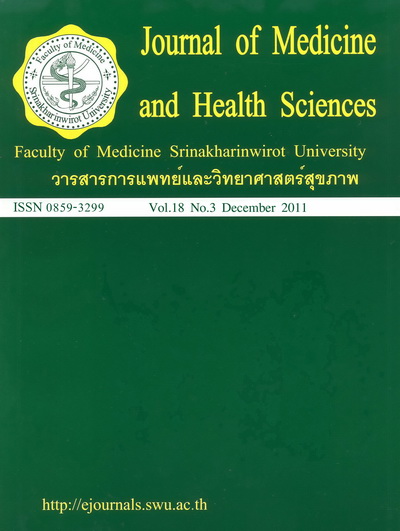Comparison of analgesic effect of tetracaine ophthalmic solution and lidocaine as a topical anesthesia for intranasal endoscopy(การเปรียบเทียบประสิทธิภาพของยาหยอดตา tetracaine กับ lidocaine ในการใช้เป็นยาชาเฉพาะที่สำหรับการส่องกล้องในจมูก)
Keywords:
tetracaine, lidocaine, intranasal, endoscopyAbstract
Objective: The aim of this study was to evaluate the efficacy of 0.5% tetracaine ophthalmic solution, compared with 10% lidocaine solution, as a local anesthetic agent for patients undergoing intranasal endoscopy.
Materials and Methods: A prospective study was conducted on patients undergoing intranasal endoscopy. Neurosurgical sponges soaked with anesthetic agents were applied into each side of the nose for 10-15 minutes before endoscopy. The patients were alternately allocated to receive 0.5% tetracaine solution in one side of nose and 10% lidocaine solution into the other side. Pain during the procedure was evaluated by a visual analog scale and statistically compared.
Results: This study consisted of forty patients. Total nasal pain score in tetracaine group was lower than lidocaine group but no statistically significance (30 vs 59, P < 0.08). No complications or adversed effects of tetracaine and lidocaine occurred. Most patients reported mild, temporary burning sensation in the nasal sites placed with 10% lidocaine but not with tetracaine.
Conclusion: Application of 0.5% tetracaine ophthalmic solution is an easy, safe, and effective analgesia for intranasal endoscopy.



